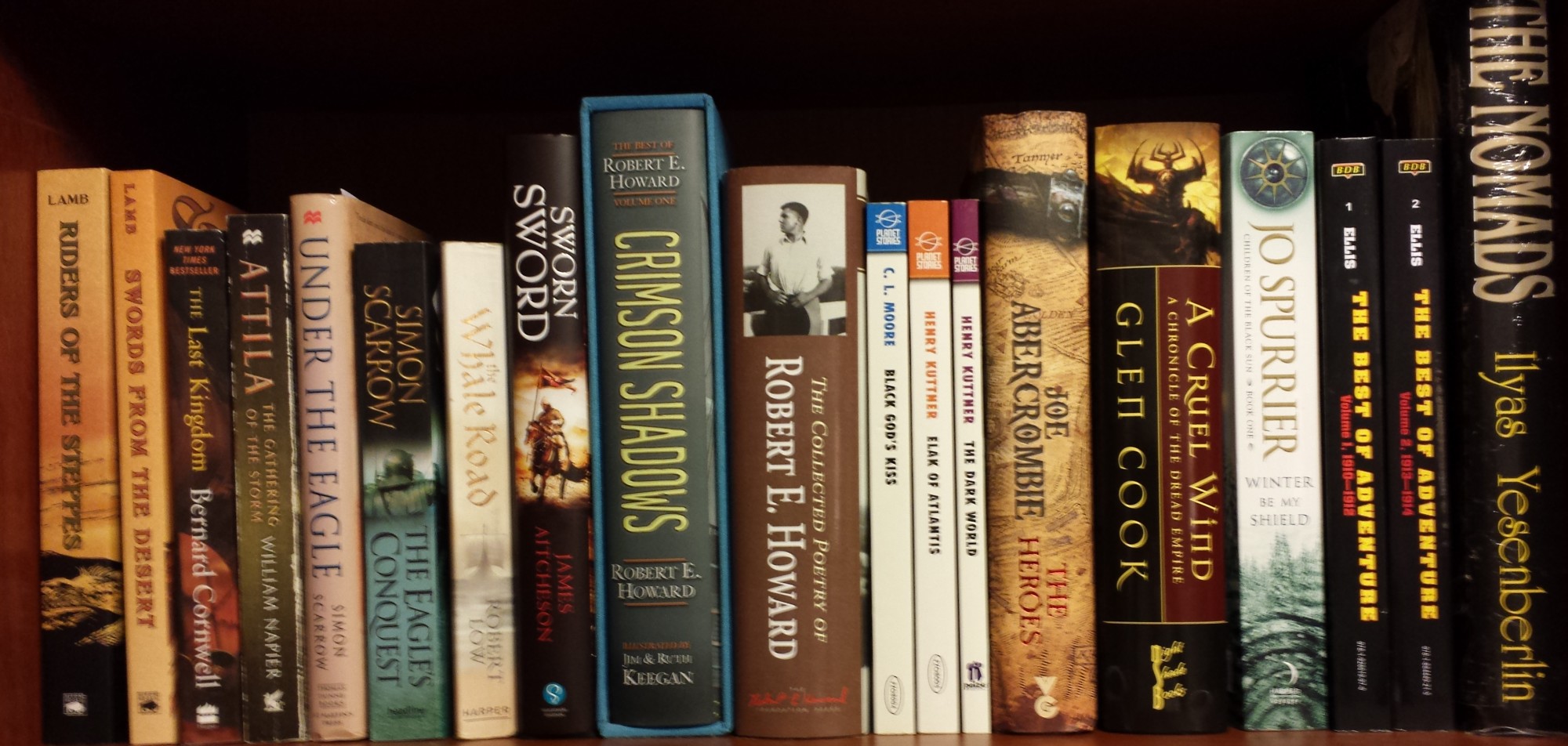Kull: Exile of Atlantis
or Bran Mak Morn: The Last King
Robert E. Howard
Del Rey
This is the next to last post about Kull and the first about Bran Mak Morn. They’re together because they appear in the same story. This is essentially a Bran Mak Morn story in which Kull has a supporting role, although many elements of the Kull series can be seen. Let’s take a quick look at it.
Howard uses the trick of telling his tale from the point of view of a supporting character, albeit a crucial one. This is a device he’s used before, especially in some of the Conan stories. The advantage to this approach is that we get to see how other characters view the hero. This allows the reader to gain a fresh perspective of the hero and is particularly useful with a series character whose identity has been well established. The viewpoint character here is Cormac na Connacht, “a prince of the isle of Erin.”
The story is divided into three parts. In the first, the Picts and their allies are awaiting a battle with an invading Roman legion the following morning. With the Celts and Picts are a group of Northmen. The northmen were defeated by Bran when they tried to invade. Their king swore and oath that he would aid Bran against the Romans in one battle, and in return Bran would build him ships for the survivors to get home. The problem is that the king was killed in a skirmish with Roman scouts, and his remaining men say his death released them from the oath. Unless Bran finds them a king to fight under, “a king neither Pict, Gael, or Briton”, they will desert to the Romans.
The ancient Druid priest Gonar promises help. Preceded by a lengthy speech about time being an illusion, he brings Kull forward in time to help with the battle, with Kull appearing to walk out of the rising sun. At first Kull thinks Bran is his friend Brule. Bran is descended from Brule and resembles him strongly. He also wears a gem in his crown that was given to Brule by Kull in a ring, and from Kull’s perspective, that happened the previous night. Kull thinks the whole things is a detailed dream. Always eager for a good fight, he agrees to lead the Northmen.
First he has to defeat the new leader of the Northmen, Wulfhere, who is resistant to Kull taking charge. An extended scene of single combat takes up the rest of the second part. It’s pure Howard. The prose is lean, exciting, and pulls you in. Of course Kull is victorious, but he’s not unscathed. This helps convince the Northmen he’s not a ghost.
The third part of the story is the battle. Bran puts Kull, who still thinks he’s dreaming, at the head of the Norsemen at the end of a gorge. They are the bait in a trap. None of the rest of Bran’s army is disciplined enough to stand and wait for the Romans to enter the gorge. Once they do, the Gaelic cavalry and the chariots of the Britons, accompanied by the Picts, will sweep in from the sides trapping them.
It’s an effective and bloody plan. Most of the Northmen die, as do most of the Romans, their camp followers, and many Picts, Gaels, and Britons. Cormac sees Kull standing on the ridge, outnumbered, the sole survivor of the bait. Just as one of the Romans is about to deliver a killing blow, the sun begins to set, and Kull is transported back to Valusia.
Appalled at the carnage, Cormac threatens to kill Bran in retribution for not springing the trap sooner. Bran replies ” ‘Strike if you will. I am sick of slaughter. It is a cold mead, this kinging it…A king belongs to his people, and can not let either his own feelings or the lives of men influence him. Now my peole are saved; but my heart is cold in my breast.”
Heavy stuff. Even in victory there is bleakness. This is one of Howard’s best. A lesser writer would have taken the easy way out at the end of the story and had the victors celebrate. Instead they mourn the loss of their friends and allies, including the Northmen, and prepare for the next battle with the Romans who will follow after those who have fallen.
This could have been a simple adventure story. Instead, Howard infused it with some of his favorite themes. There’s much discussion about the nature of time and reality. Is Kull dreaming being with Bran, or was his former life a dream from which he had just awakened. Then there’s the weight of the crown and responsibility, often fulfilled in blood, of those who wear it. Finally, throughout the story, Howard makes references to the rise and fall of the Picts in particular and how much science has been lost since Kull’s time. Kull’s armor and weapons are superior to any other in the battle, on either side.
The strands of melancholy and philosophy make this one of Howard’s better tales. It’s one I’ll return to again in the future, for it’s well worth multiple readings.
The Kull series of posts is about at an end. The only one remaining is for “By This Axe I Rule!” which was rewritten into “The Phoenix on the Sword”, the first of the Conan tales. I’ll be comparing the two in the final Kull post. That post will launch a series of posts looking at selected Conan stories. This post launches a series of posts about Bran Mak Morn. Bran, Kull, and Conan are Howard’s three warrior kings, and Kull is the common link between them. I’ll have more to say about that as we look at Bran and Conan over the next few months.






